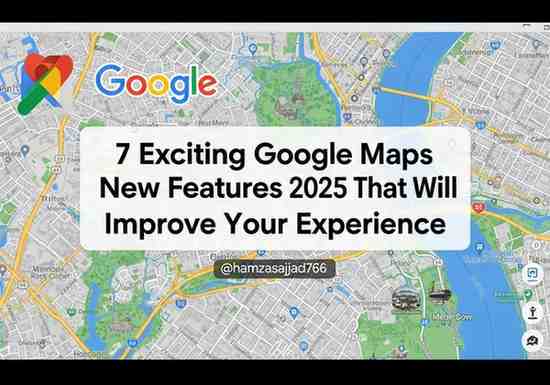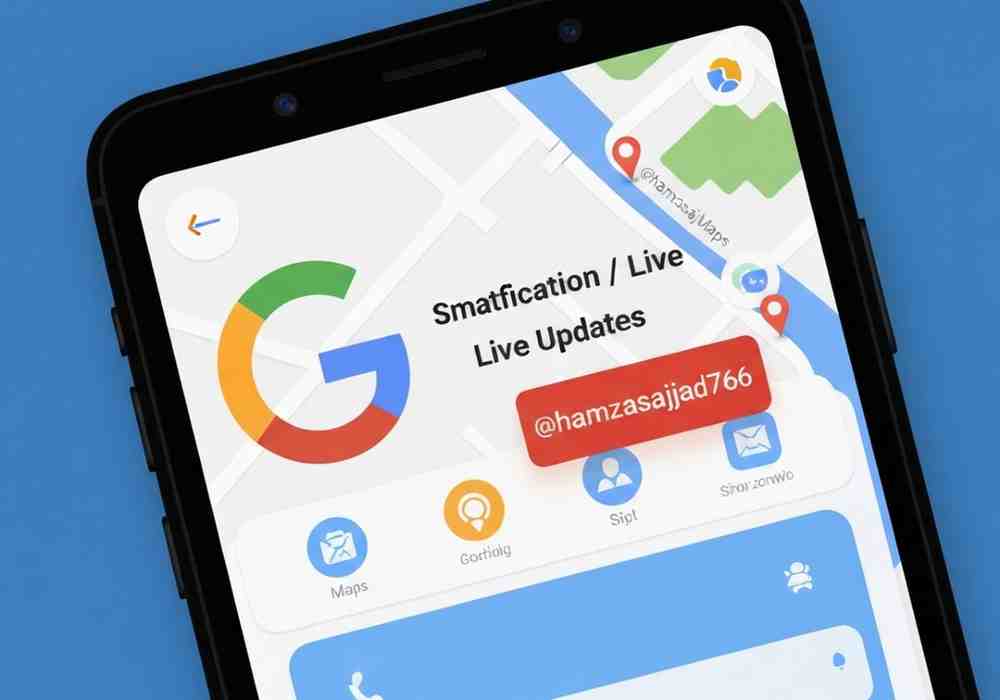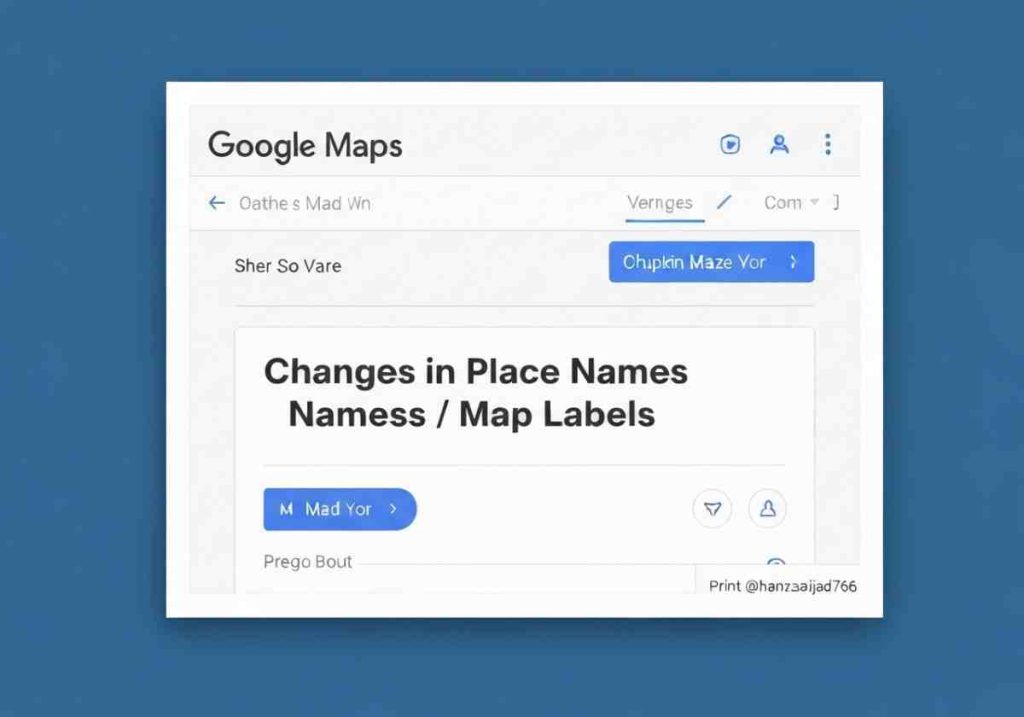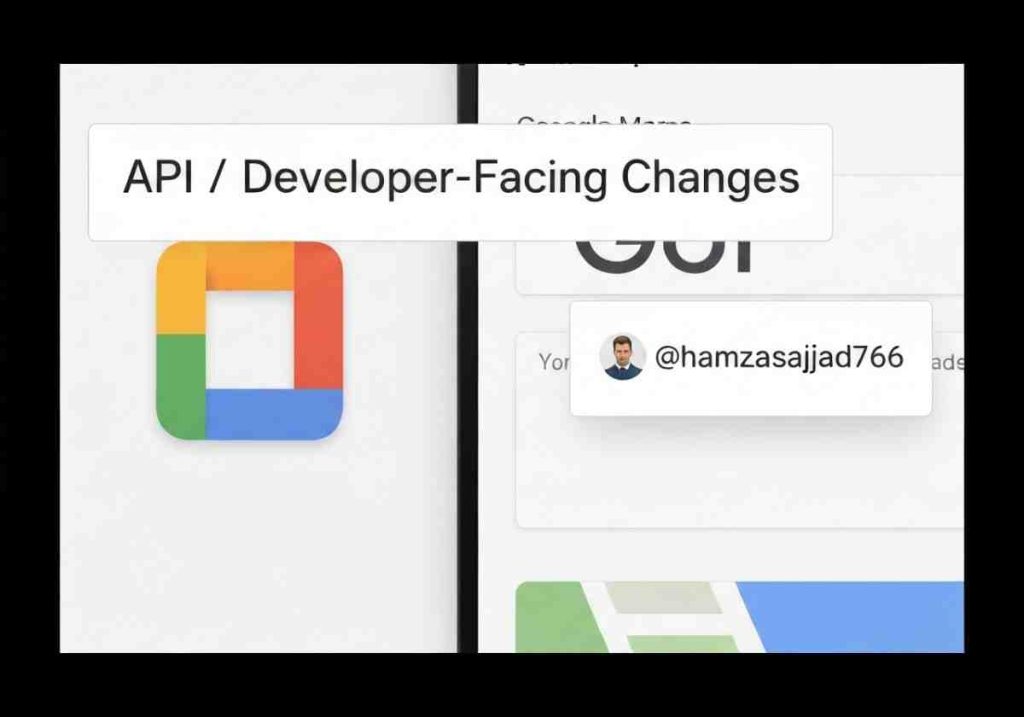Discover the latest Google Maps New Features 2025, including design upgrades, smarter notifications, Live View integration, tunnel navigation, and more. 7 Exciting Google Maps New Features 2025 That Will Improve Your Experience
Google Maps New Features 2025

Google Maps New Features 2025 bring a fresh wave of improvements for everyday users, developers, and businesses. From design upgrades to smarter notifications, Google is transforming how we navigate, share locations, and use Maps in complex environments.
Table of Contents
1. Refreshed Design & Style Upgrades
Google Maps Platform has introduced a new default map style as of March 25, 2025. The update includes a modernized color palette, more vibrant and rounded map pins, and tweaks aimed at making maps easier to scan and more visually appealing.
If you use APIs/SDKs or embed maps, your apps will gradually see these style changes. For developers using “map IDs,” there’s cloud-based styling to preview or customize on top of the default.
2. Smarter Notification / Live Updates (Android 16)
On Android 16 (beta and rolling out), Maps now uses what Google calls “Live Updates.” For example, users will see statuses like “time until next turn” or “estimated time of arrival” in the status bar or lock screen, so you don’t need to keep switching to the app.

There are also UI tweaks tied to Android 16: the bottom carousel with key actions (Directions, Save, Share, etc.) is more static/pinned, making it easier to reach those even when browsing a place’s detail. Rounded grey boxes help with contrast and visibility.
3. Improved Location-Sharing + Live View Integration
A newer feature, especially on newer phones like Google Pixels, lets you combine Live View (camera + AR overlays) with friends’ location sharing. When a friend shares their location, you can use Live View to more intuitively find them in a crowded or complex space.
Read More: 06 Powerful Free IT Courses in Punjab Under Chief Minister Skill Development Initiative
4. Navigation in Signal-Poor Areas (e.g. Tunnels)
In Madrid, in collaboration with local authorities and Waze, more than 1,600 Bluetooth beacons have been installed in the M-30 tunnel (a 48-km stretch) to maintain navigation even when GPS signal drops. Maps and Waze can use those beacon signals to keep location tracking and traffic info alive underground.
5. Changes in Place Names / Map Labels

In the US, Google Maps changed “Gulf of Mexico” to Gulf of America following a government executive order. Users in Mexico still see “Gulf of Mexico,” and outside those countries both names may show.
Also, “Mount Denali” is now shown as “Mount McKinley” in the US under that same directive.
6. Decommissioning of Some Features
Assistant Driving Mode has been fully removed from Maps (and Android) by mid-2025. Google is moving towards its Gemini platform, and supporting features have been stripped out gradually.
There’s also a recently acknowledged bug: media playback controls for apps like Spotify and YouTube Music disappeared in some builds of Google Maps. Google says they’re working to restore them.
7. API / Developer-Facing Changes

The Maps Platform pricing model and quotas changed as of March 1, 2025. The $200 monthly credit was replaced by free usage thresholds for different core services. There are new categories like Essentials, Pro, and Enterprise.
Also, some “legacy” APIs (Places API, Directions API, Distance Matrix API) are being deprecated or have reduced priority. Google is pushing users towards newer versions (Places API (New), Routes API, etc.) for improved features and better volume discounts.
What These Google Maps New Features 2025 Mean in Practice
For everyday users: Expect cleaner, more readable maps, smoother access to key functions, better navigation inside tunnels or areas with poor GPS, and more intuitive location sharing in busy places.
For developers and businesses: There are both opportunities and adjustments. You’ll need to update to newer APIs, adjust to the pricing model, possibly redesign map visuals or pin styles, and take advantage of new features such as AR and Live View integration.
For specific regions or devices: Some features (like Live Updates in the status bar, or Live View integration) may roll out slower or only for certain phones or cities. Local naming or map label changes depend on government or official sources.